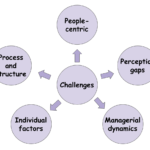Agile sprints are the backbone of many successful product development processes, enabling teams to deliver incremental value while remaining adaptable. However, running effective sprints can be challenging when your team is distributed across time zones, geographies, or work environments. In this article, we’ll explore how to overcome these challenges, leverage technology, and foster collaboration to ensure productive Agile sprints with distributed teams.
Challenges of Distributed Agile Teams
| Challenge | Why It’s a Problem |
|---|---|
| Time Zone Differences | Scheduling meetings or stand-ups becomes complex, leading to potential delays in communication. |
| Lack of Face-to-Face Interaction | Makes it harder to build rapport and address issues in real-time. |
| Communication Silos | Misunderstandings and lack of context can derail collaboration. |
| Tool Overload | Using too many tools can confuse workflows and reduce efficiency. |
| Monitoring Progress | Tracking individual contributions and sprint progress is harder without clear visibility. |
Best Practices for Agile Sprints with Distributed Teams
| Practice | How It Helps | Implementation Tips |
|---|---|---|
| Establish Core Working Hours | Ensures overlapping time for collaboration despite time zone differences. | Define a few hours daily where all team members are expected to be available for synchronous work. |
| Use Agile-Friendly Tools | Enhances visibility into progress and facilitates collaboration. | Use tools like Jira for sprint tracking, Slack for communication, and Miro for visual collaboration. |
| Run Virtual Stand-Ups | Keeps the team aligned and helps identify blockers. | Use video conferencing tools like Zoom or Microsoft Teams, ensuring everyone has a chance to speak. |
| Document Everything | Ensures clarity and reduces the need for repeated explanations. | Use Confluence or Notion to maintain sprint goals, stories, and decisions in a single source of truth. |
| Foster Asynchronous Communication | Allows team members to contribute without needing real-time interaction. | Use Slack channels or project boards to share updates, progress, and queries. |
| Create Clear Sprint Goals | Aligns distributed teams around a common objective. | Use SMART (Specific, Measurable, Achievable, Relevant, Time-bound) criteria for defining sprint goals. |
| Rotate Meeting Times | Shares the inconvenience of odd-hour meetings across team members in different time zones. | Alternate sprint reviews or planning sessions to accommodate everyone equally. |
| Focus on Team Morale | Builds trust and fosters collaboration in a remote setting. | Host virtual coffee breaks or team-building activities to maintain personal connections. |
| Utilize Retrospectives | Helps identify and resolve issues specific to distributed workflows. | Encourage open feedback on what’s working and what isn’t, using tools like Retrium for anonymous input. |
Tools to Streamline Distributed Agile Sprints

Sprint tracking, backlog prioritization, and progress reporting.
Real-time messaging and asynchronous communication with integrations for Agile workflows.


Hosting virtual stand-ups, sprint planning, and retrospective meetings.
Collaborative whiteboard for brainstorming, sprint planning, and story mapping.


Centralized documentation for maintaining sprint goals, stories, and retrospective insights.
Visual task management for tracking individual contributions and sprint progress.


Manage code changes, maintain version control, and collaborate effectively on development tasks and sprint reviews in remote environments.
Case Study: Distributed Sprints at Automattic
Automattic, the company behind WordPress, operates with a fully distributed team spread across the globe. Here’s how they run effective Agile sprints:
- Time Zone Flexibility – Automattic allows team members to work asynchronously, supported by clear documentation and tools like Slack.
- Frequent Communication – Teams have regular virtual stand-ups and sprint reviews to maintain alignment.
- Focus on Outcomes – Instead of micromanaging tasks, Automattic emphasizes sprint goals and empowers teams to work independently.
Key Metrics to Measure Success
| Metric | Why It’s Important |
|---|---|
| Velocity | Tracks the amount of work completed in a sprint to gauge productivity. |
| Sprint Burndown Chart | Visualizes progress toward sprint completion and identifies potential delays. |
| Team Satisfaction | Measures team morale and identifies areas for improvement in remote collaboration. |
| Defect Rate | Tracks the number of bugs or issues identified during the sprint, highlighting quality challenges. |
Action Steps
- Assess your current sprint practices and identify areas for improvement.
- Adopt some of the best practices and tools discussed in this article.
- Continuously refine your process by gathering feedback through retrospectives.
Subscribe to our newsletter for more insights on Agile practices, product management tips, and tools for distributed teams.






